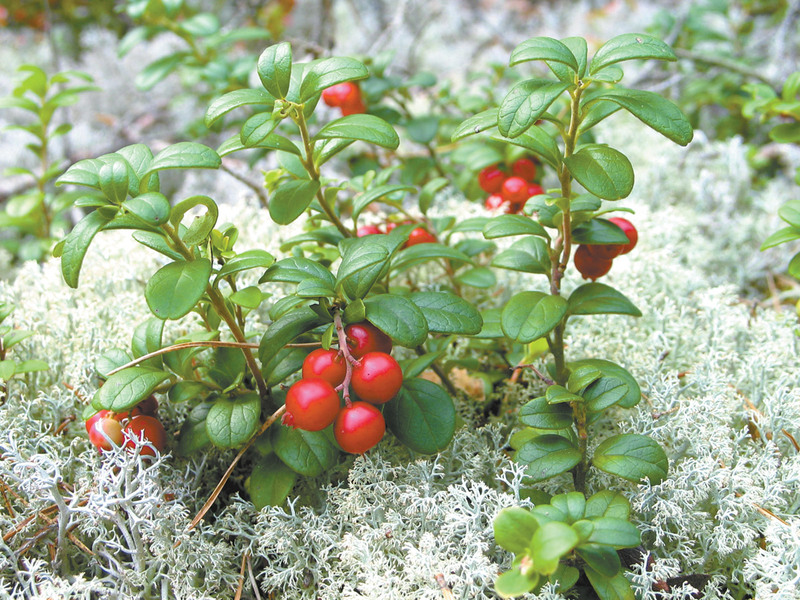Ever since 1638 when the Swedish ships Kalmar Nyckel (Key of Kalmar) and Vogel Grip (Griffen) sailed to Delaware, Americans have taken to all things Swedish, whether it is Greta Garbo, Ingrid Bergman, Ann-Margret, Abba or even Pippi Longstocking. Pippi Longstocking, of course, possessed super human strength: She was able to lift her horse one-handed. But Sweden, through its infamous IKEA stores, also introduced many Americans to a small wine-red berry about the size of a blueberry, the lingonberry (Vaccinium vitis-idaea). It is related to the cranberry, bilberry and blueberry. The lingonberry contains an astonishing variety of plant chemicals called polyphenols, which are powerful antioxidants, to help neutralize the sun’s radiation and prevent damage to its tender flesh. One Polyphenols called flavonoids give lingonberries their deep red coloring and give us health benefits when we eat them. The lingonberry has higher concentrations of plant polyphenols than most berries.
The lingonberry is a hardy perennial evergreen shrub that grows one-and-a-half feet tall. It grows wild in the forests of northern Europe and northern America. The small pink and white flowers give way to green berries that turn red when ripe.
Lingonberries prefer acidic soil, with a pH below 5.8. A fast- draining, sandy soil does best. You can mix peat moss into the planting beds and mulch with straw, pine needles, or sawdust. Since the roots are close to the soil surface, avoid cultivating near the plants.
Lingonberry plants do well in light shade and are hardy to USDA Zone 2. They take about a year or two before producing fruit. As a bonus, you will get two crops each year, the first crop in midsummer (around July) and the second crop in late fall (thru November). You can find lingonberry plants at specialty nurseries or by mail from Raintree Nursery, Saint Lawrence Nursery, Jung Seeds, Stark Brothers and others.
Because of their compact size, lingonberry plants are ideal for containers and window boxes. Or use them as a short border plant, spaced a foot apart. Or scatter then in the rock garden or along a woodland path. With their evergreen glossy leaves, lingonberry plants make excellent ground covers similar to vincas or sedum. They will soon form dense mats, choking out weeds. You can hand pick the berries, or invest in a handheld rake similar to one used to harvest cranberries.
The new growth in spring is blushed with red and orange. Lingonberries can be used effectively spotted throughout a rock garden.
While the Swedish store IKEA has popularized Lingonberry jam, you can use your fresh lingonberries in any recipe that calls for blueberries or cranberries. The tart sweet flavor of the berries goes well with meats, especially lamb and game meats.
You can puree the berries to make juice, or cook them down
An easy to grow, carefree berry that will give you two crops a year of life-giving berries just may give you the strength to lift a horse. Just ask Pippi Longstocking.




















































